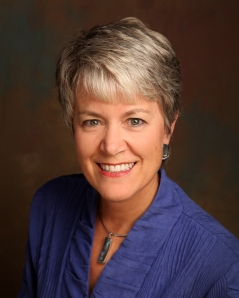
Hearing Elmo welcomes guest author, Juliette Sterkens. Juliette Sterkens, AuD is a Wisconsin audiologist with 30+ years of experience in the field of audiology and hearing instrument fittings. Dr. Sterkens is currently on a sabbatical from her audiology practice to speak around the country to consumers and hearing care professionals on the use of hearing loops in behalf of the Hearing Loss Association of America. Her efforts have leveraged nearly 300 hearing loop installations in the Fox Valley and Wisconsin and many more beyond. She is the creator of the www.loopwisconsin.com website and her blog at http://loopwisconsin.wordpress.com . She has received the Wisconsin Audiologist of the Year, the American Academy of Audiology Presidential Award and the Humanitarian of the Year Award from Arizona School of Health Sciences for her work on a local, state and national level.
Chris Prust of Oshkosh is one of 36 million Americans with a significant hearing loss. Although she wears a hearing aid and a cochlear implant, it is still difficult for her to clearly hear and understand amplified speech in churches, auditoriums, or meeting rooms. As a member of the Algoma Boulevard United Methodist Church in Oshkosh, she was delighted at the results the first Sunday the church turned on its new hearing loop system. “I’m home now and can’t stop smiling. The system went way beyond meeting my expectations. I was in awe. I thought I would never again be able to experience a church service where I could hear every world and be able to follow along with the music knowing I was singing the correct and note and verse,” Chris said.
A hearing loop takes a signal from a sound source — a television or a public-address system, for example — and transmits it through an amplifier to a wire that surrounds (“loops”) the audience. That wire sends a magnetic signal to a person’s hearing aid, which has a telecoil, a type of sensor. The hearing aid wearer then gets a direct, clear signal, one without interference from reverberation and crowd noise.
Hearing loops are most commonly found in auditoriums, concert halls, places of worship and lecture halls but new applications make it useful for ticket booths, taxis, tour buses, service desks and airport gates. While public installations require a trained installer, a TV or computer can be self-installed by a handy individual. Hearing loops have been in widespread use in public venues in England and the Scandinavian countries for some time, and are now starting to catch on in the United States. (See www.hearingloop.org)
Jim and Vicki Denzin, parents of three daughters, two of whom use hearing aids, are grateful that St Raphael Catholic Church in Oshkosh has installed a hearing loop. “Our girls are now able to understand Fr. Doug so much better” they commented. So pleased were they with the hearing loop technology they also installed a system in their Neenah home. Jim commented installation only took an hour and was not hard to do. Vicki reports her girls love using the loop in the TV room but is also quick to point out that it makes it easier for the girls to ignore their mother when they are watching TV. The loop has one other downside Vicki laughs, “The loop broadcasts to other areas of the house including the upstairs which meant we quickly learned to turn the loop amplifier off when it is bedtime, otherwise they pick up the TV’s audio while in their bedrooms!”
Hearing loops make public facilities accessible for people with hearing loss and brings them in compliance with the Americans with Disabilities Act. In the Fox Valley many libraries, nearly a hundred large churches, the Fox Cities Performing Arts Center, the Oshkosh Convention Center, funeral homes, the Grand Opera House and several retirement communities and senior centers all have taken the initiative to install hearing loops to better serve people with hearing loss. A list of loops of loops around the country can be found at www.aldlocator.com
“It is not because the sound is not loud enough, that people who have hearing loss complain that they can’t hear” said audiologist Dr. Juliette Sterkens, an Oshkosh audiologist at Fox Valley Hearing Center, who is on a sabbatical from her practice to
serve as the Hearing Loss Association of America’s hearing loop advocate, “it is because the reverberation and background noise in large rooms and churches make understanding very difficult for persons who use hearing aids. A hearing loop helps to overcome this problem”
Sterkens started a Hearing Loop Initiative in early 2009, similar to an initiative in Michigan (see www.loopwisconsin.info) and today nearly 300 hearing loops can be found around the state. Sterkens continued “Hearing loops can profoundly affect people who use hearing aids. When Chris Prust told me that the day the hearing loop was turned on at her church, was one of the most memorable moments in her life because it made her feel “normal’, we both cried a few tears.”
– Juliette Sterkens, AuD
———

Thank you so much for this piece! I am in the process of supporting two agencies in my community as they gather information to make their facilities hearing accessible through the use of loop systems. This is perfect for me to share with them!
Just one comment: in the last 3 years we’ve gone from 300 to over 600 looped places in Wisconsin and many more beyond. Including over 300 houses of worship. For a complete list see the LoopWisconsin website.